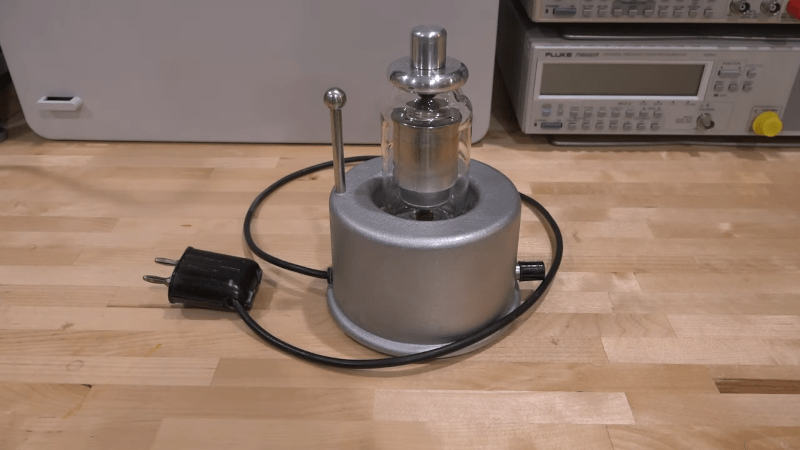What’s round, has what looks like a vacuum tube in the center, and was made in the 1950s by HP? We don’t know either, but [The Signal Path] restored one and shows us this mystery instrument in a recent video that you can see below. We aren’t going to spoil the surprise over what the device is, but we will share that he does reveal what it is very early in the video, so there’s not much of a tease.
We will, however, give you a few hints. Looking at it, you can guess that it is meant for high voltage use and, in fact, it is rated for up to 25 kV. We’ll also drop the hint that it is made for use with AC, not DC. The shape of the plug at the end of the wire is also a clue, we think.
There isn’t much inside the unusual round case (another clue, by the way), but there are some vintage parts we haven’t seen in quite awhile. One last clue: Why is there a metal rod and ball sticking out of one side of the device?
Honestly, the insides are a bit underwhelming so unlike some teardown videos we’ve seen, the real star of this video is the unusual device more so than its inner workings. If you have a hankering for a more sophisticated HP exploration, check out the HP3458A repair we covered earlier. Or go old school and peek inside an HP 150A.















Dielectric breakdown tester?
Took me half a second to recognize it as a capacitive voltage divider. Resistive ones are more useful, because you can measure DC voltage. Put a capacitive divider in parallel with it, and you have a compensated divider that measures both. High-R resistors are spiral wound for voltage standoff, so are inductive.
The most amazing thing about that whole video was not mentioned: the test lead on this device from the 1950s connects directly to his test tool from the…. 2010s, maybe?
Yup, the test equipment standard dual banana plugs with 3/4″ spacing dating from the 1920’s. Almost a hundred years old and still in used today because of almost a hundred years worth of equipment and accessories that uses it. It works, so why not?
I think they were standard for swapping radio crystals on a front panel? Maybe I am imagining they are the same. https://www.ebay.com/itm/303372174947
The ‘extra’ protection suggested at 5:17 ( in the schematic to the right of C4 ) is probably simply a way to depict the shielded cable connection to the output plug.